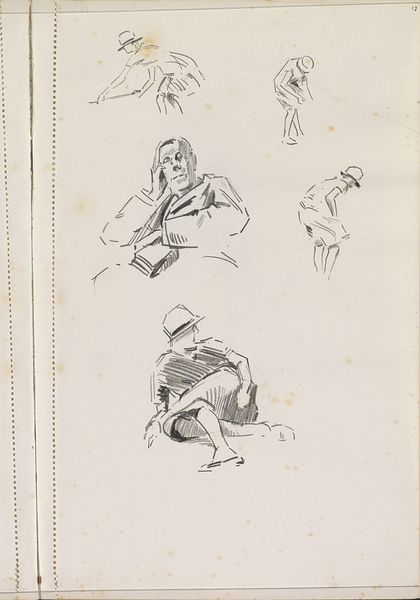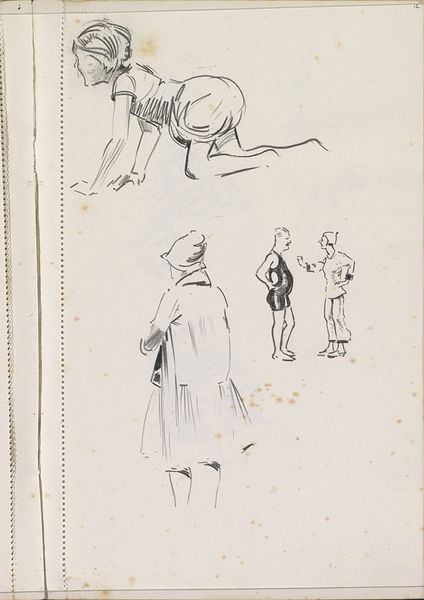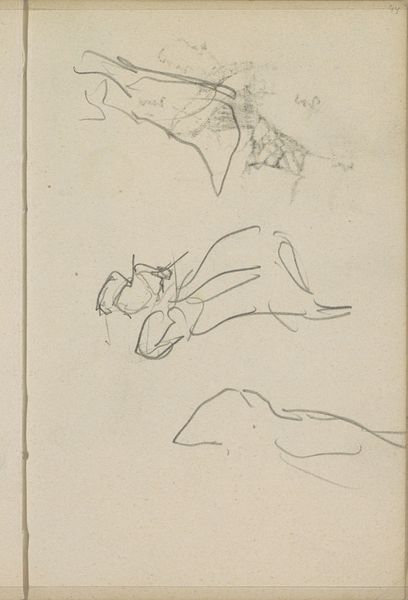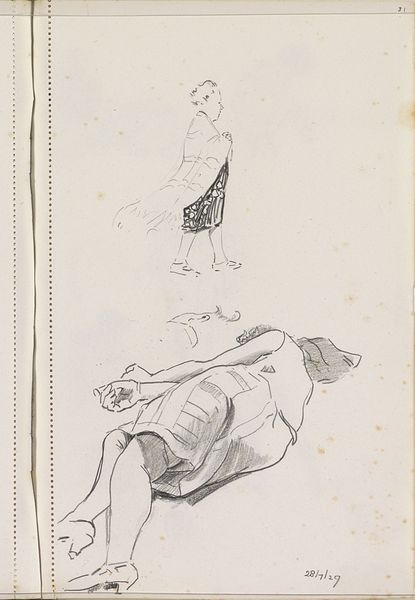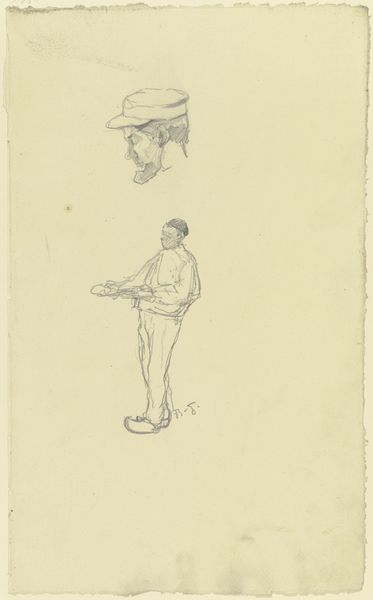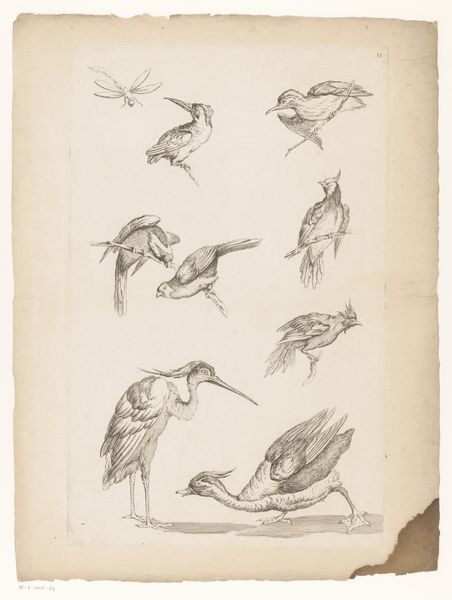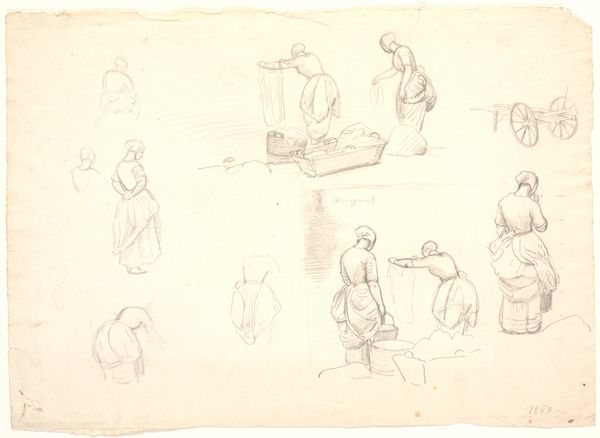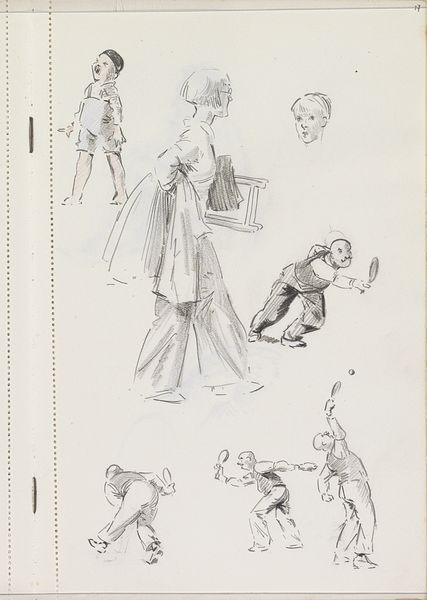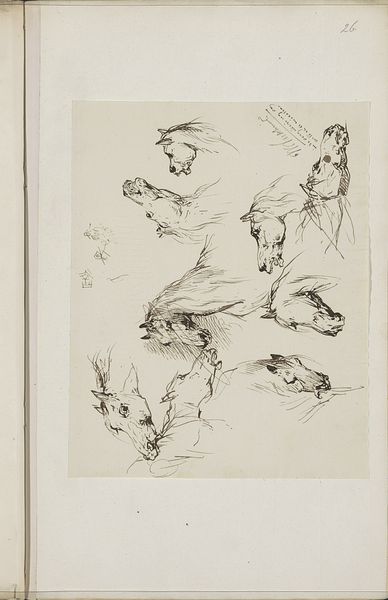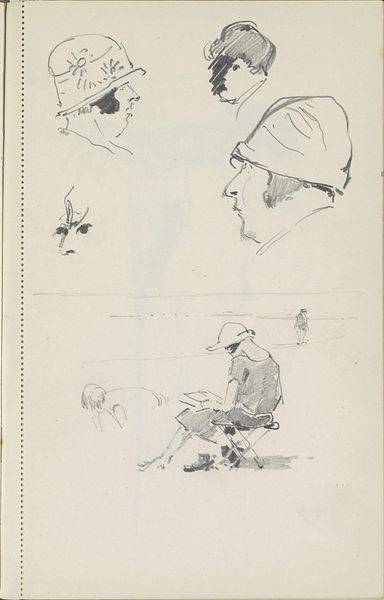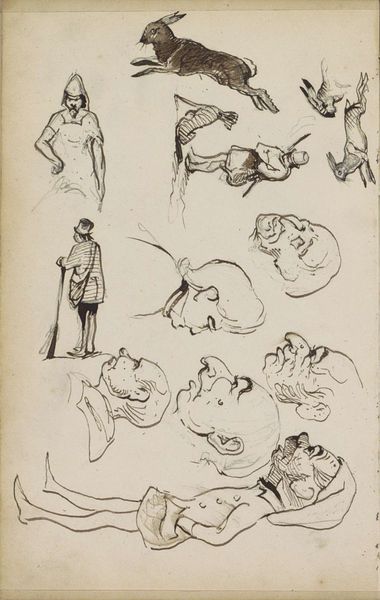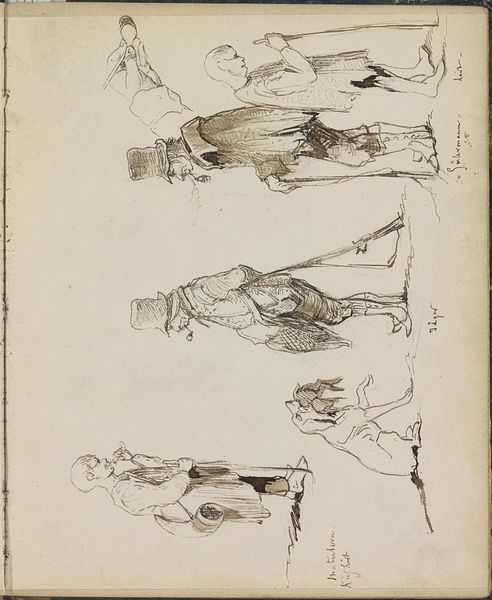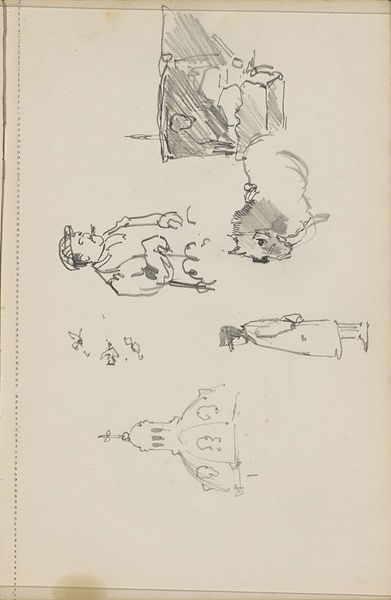
Copyright: Rijks Museum: Open Domain
Editor: Here we have Otto Verhagen's "Kinderen, een liggende man met een pijp en een zittende vrouw" made around 1928-1930, using pen, pencil, and paint on paper. I'm struck by the casual, almost snapshot-like quality of the figures sketched here. What do you notice, viewing this piece through a formalist lens? Curator: The formal elements construct a fascinating tension. Note the deployment of line – at once economical and descriptive. The artist uses line weight and density strategically. How does this variance direct the eye? Editor: Well, my gaze is drawn initially to the reclining man at the bottom. The heavier lines give him more visual weight. Is that intentional? Curator: Indeed. Consider the composition as a whole. Verhagen fragments the picture plane with distinct vignettes. The eye journeys through various forms – do you notice how these groupings share visual qualities that subtly unites the composition? Editor: Yes, there is a unity. They share a similar linework. I do wonder how the artist made decisions about what to complete with colour and what to leave in monochrome. Does that add symbolic meaning? Curator: One might argue that colour here underscores particular forms, giving more visual dominance in an otherwise linear and graphically-oriented plane, however a semiotic interpretation here might seem digressive from its formal nature, for now. The painting rewards our gaze for its technical sophistication and formal relationships that operate autonomously, without needing an explanation of ‘outside’ ideas. Editor: I see what you mean. It's about appreciating the language of the artwork itself first. Curator: Precisely. By isolating the core pictorial devices— line, form, and pigment— we grasp the art's self-referential logic and expressive power on a fundamental level. Editor: Thanks, it makes sense focusing on the image as the main form of communicating something, the structure alone. Curator: My pleasure. Exploring art through its visual syntax can unveil surprising aesthetic achievements.
Comments
No comments
Be the first to comment and join the conversation on the ultimate creative platform.
